When staying organized and effectively managing information, having the right tools can make all the difference. One versatile tool that can be used in both educational and business settings is the 4×6 index card. This small piece of card stock is not only useful for note-taking, but also for organizing information and creating flashcards.
In this article, we will explore the various purposes and benefits of using 4×6 index cards, as well as provide tips for successfully incorporating them into your daily routine.
What Are 4×6 Index Cards?
4×6 index cards are small, rectangular pieces of card stock that measure 4 inches by 6 inches. They are typically lined on one side and blank on the other, providing flexibility for various uses. These index cards can be easily printed using a standard printer, allowing you to customize them with any information or design you desire.
Whether you need to jot down important notes during a meeting, create flashcards for studying, or organize ideas for a project, 4×6 index cards are a convenient tool to have on hand. They are portable and lightweight, making them easy to carry with you wherever you go.
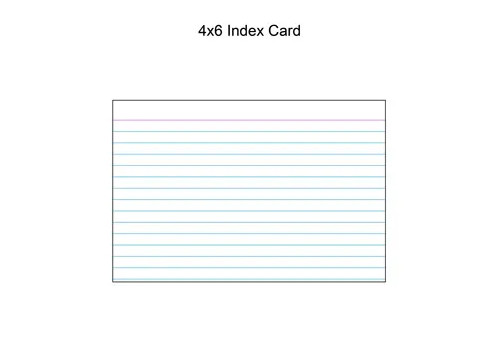
Why Use 4×6 Index Cards?
There are several reasons why 4×6 index cards are a valuable tool for note-taking, organization, and flashcards:
- Versatility: 4×6 index cards can be used for a variety of purposes, making them a versatile tool for both educational and business settings.
- Organization: The small size of these index cards makes them ideal for organizing information. You can use them to create lists, categorize ideas, or sort through complex concepts.
- Flexibility: With one side lined and the other blank, 4×6 index cards offer flexibility in how you use them. You can write notes on the lined side or draw diagrams and sketches on the blank side.
- Portability: The compact size of 4×6 index cards makes them easy to carry with you. You can keep them in your pocket, purse, or backpack for quick access to important information.
- Customization: 4×6 index cards can be easily customized to suit your needs. You can print them with specific information, designs, or color-coding to enhance organization and visual appeal.
- Cost-effective: Compared to other organizational tools, 4×6 index cards are a cost-effective option. They are inexpensive to purchase and can be printed using a standard printer.
- Engagement: The act of physically writing or drawing on index cards can enhance engagement and retention of information. It allows for a more interactive learning experience compared to typing on a computer or device.
- Efficiency: 4×6 index cards can help streamline your workflow and increase productivity. They provide a structured format for note-taking and organization, allowing you to quickly reference information when needed.
- Collaboration: 4×6 index cards can be easily shared and used for collaborative projects. You can distribute them to team members or classmates, allowing for efficient information sharing and brainstorming.
How to Use 4×6 Index Cards
Now that you understand the benefits of using 4×6 index cards, let’s explore how to effectively incorporate them into your note-taking, organization, and flashcard practices:
1. Note-Taking
When taking notes, use 4×6 index cards to capture key points, important details, or main ideas. Here are some tips for successful note-taking with index cards:
- Be concise: Write down information in a concise and clear manner. Use bullet points or short phrases to capture the main points.
- Use color-coding: Assign different colors to different categories or topics. This will make it easier to visually organize and locate specific information.
- Add visuals: If applicable, draw diagrams, charts, or illustrations to enhance your understanding of the topic. Visual representations can aid in information retention.
- Date your cards: Include the date on each index card to keep track of when the information was recorded. This can be helpful for future reference and organization.
2. Organization
4×6 index cards can also be used for organizing information. Here are some ways to effectively organize using index cards:
- Create categories: Divide your index cards into different categories based on the topics or themes you are organizing. Use dividers or colored tabs to easily identify the different sections.
- Arrange in a logical order: Arrange your index cards in a logical order that makes sense to you. This could be alphabetical, chronological, or based on importance.
- Use a filing system: Store your index cards in a filing system that works for you. This could be a cardholder, a binder with sheet protectors, or a file box.
- Review and revise: Regularly review and revise your organized index cards to ensure they are up to date and reflect any changes or new information.
3. Flashcards
4×6 index cards are excellent for creating flashcards to aid in studying and memorization. Here’s how to use them effectively:
- Write a question or term on one side: On one side of the index card, write a question, term, or concept you want to learn or memorize.
- Write the answer or definition on the other side: On the opposite side of the index card, write the corresponding answer or definition.
- Test yourself: Use the flashcards to test your knowledge. Cover the answers and quiz yourself on the questions. Flip the card over to check if you are correct.
- Repeat and review: Repeat the flashcard exercise regularly to reinforce your learning and improve retention. Focus on the cards that are more challenging to ensure a thorough understanding.
Examples
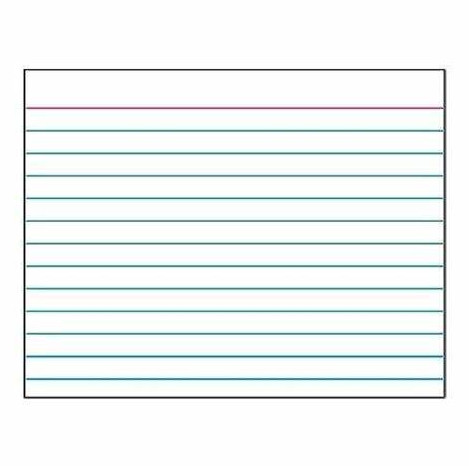
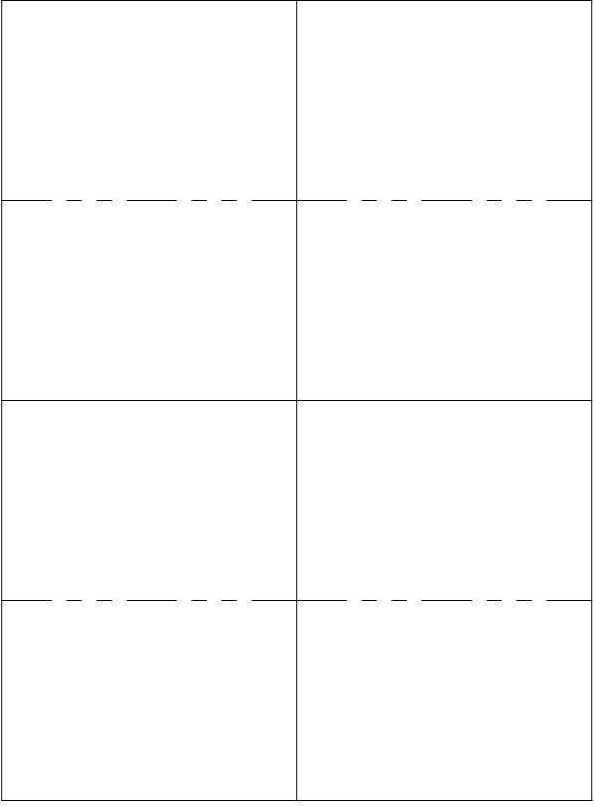
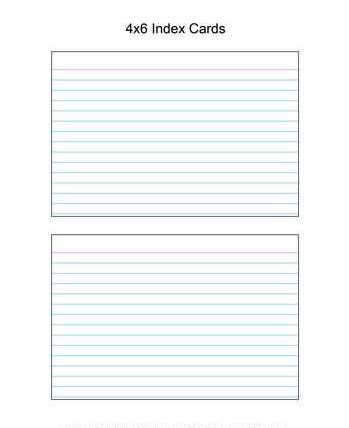
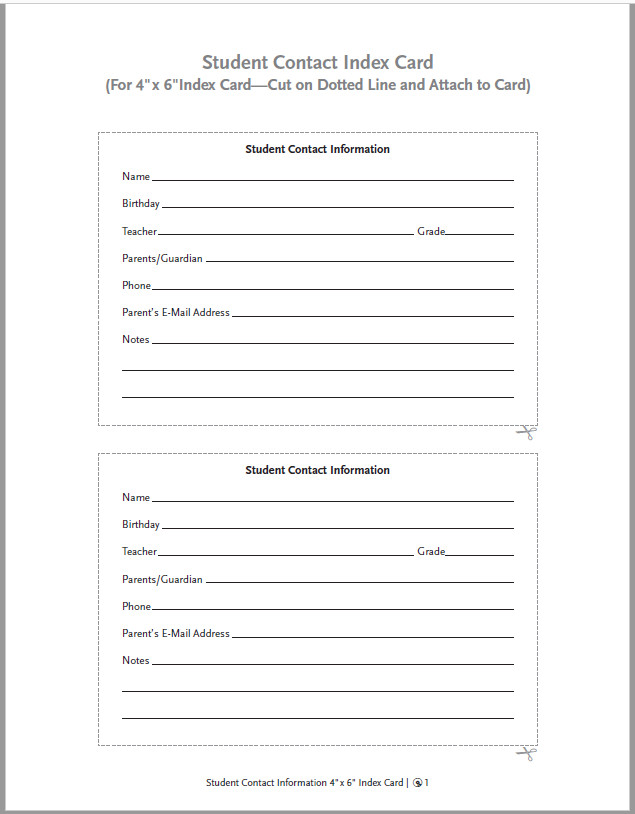
Tips for Successful Use of 4×6 Index Cards
Here are some additional tips to ensure successful use of 4×6 index cards:
- Keep a supply on hand: Always have a stack of 4×6 index cards available whenever you need to jot down information or organize your thoughts.
- Use a cardholder or binder: Invest in a cardholder or binder with sheet protectors to keep your index cards organized and protected.
- Experiment with different designs: Get creative with your index cards by experimenting with different designs, colors, and layouts. This can make the process more enjoyable and engaging.
- Share and collaborate: Consider using index cards for collaborative projects. Distribute them to team members or classmates and encourage brainstorming and idea sharing.
- Regularly review and revise: Set aside time to review and revise your index cards to ensure they remain up to date-and reflect any changes or new information.
- Combine digital and physical tools: While 4×6 index cards are a valuable tool, consider combining them with digital tools for a more comprehensive and integrated organizational system.
Conclusion
4×6 index cards are a valuable tool for note-taking, organization, and creating flashcards. They offer versatility, flexibility, and customization options that make them ideal for both educational and business settings. By incorporating 4×6 index cards into your daily routine, you can enhance your organization skills, improve information retention, and increase productivity.
Whether you’re a student looking to streamline your studying process or a professional needing a convenient tool for keeping track of important information, 4×6 index cards are a reliable and effective solution. Their compact size and ease of use make them a practical choice for anyone seeking to stay organized and on top of their tasks.
So, why not give 4×6 index cards a try? Start by printing a stack of cards and experiment with different ways to use them. Whether you’re taking notes during a lecture, organizing your thoughts for a project, or creating flashcards for studying, 4×6 index cards are sure to become a valuable addition to your toolkit.
4×6 Index Card Template – Download
